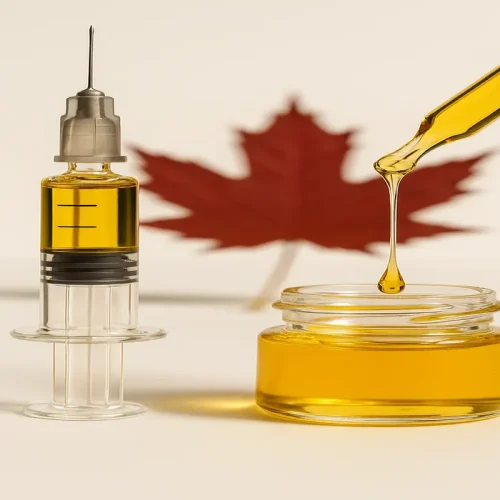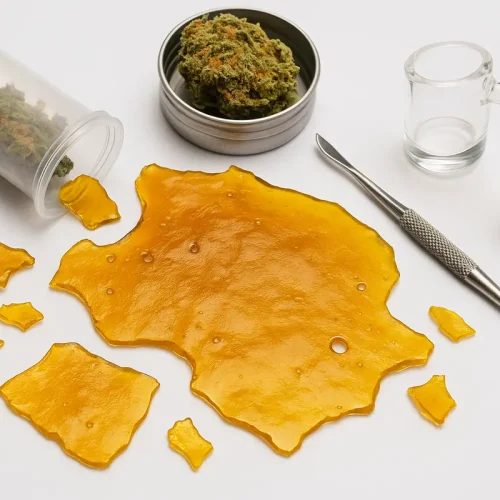Did you know that you can clone cannabis plants? It sounds like some sort of sci-fi mad scientist experiment, but there are benefits to cloning a plant vs. growing from a seed, and cloning cannabis plants are easier than you think.
What Is Cloning and Why Would You Want to Clone a Cannabis Plant?
There are two ways that you can go about breeding cannabis. The first is through sexual reproduction, where you cross a male plant with a female through pollination in order to create seeds. Those seeds can then be planted to create genetic hybrids of the two parent plants.
The second method is through cloning, otherwise known as asexual reproduction. Clones are rooted cuttings that are genetically identical to the plant they were taken from. There are many benefits to cloning that contribute to its popularity among both commercial and home growers. If executed properly, not only can cloning your cannabis be cost-saving, it has the potential to offer your garden a whole new level of stability and sustainability.
Through cloning, you can create a new harvest with exact replicas of your best performing plants. Because the genetics are identical, you’re getting a plant with the same characteristics, so if you come across a bud you really, really like, you might want to clone the plant it came from so you can produce more buds with the same effects. Consider taking clones from your garden if you are looking to select and replicate plants with desirable features such as flavor, cannabinoid profile, yield, grow time, etc.
Not only does cloning save you time and money by not having to pop new seeds, you’re also ensuring that your crop will be genetically indistinguishable. Moreover, cloning is the answer to self-sufficiency in your garden. Given the right conditions, you could perpetuate a phenotype for as many harvests as you desire, without having to start new seeds.
Cloning Cannabis Plants From Your Garden
Getting started with cloning in your garden is relatively easy and requires just a few key items:
- A razor for taking cuttings (try not to use scissors when taking cuttings as they tend to crush branches, making rooting much harder)
- Some water
- A rooting medium
- A rooting hormone
When selecting mothers to clone, look for plants that are healthy, sturdy, and about two months into the vegetative cycle. If you cant or don’t want to wait, give it at least three weeks before taking your first cutting — at this point in a plant’s growth phase, your new cuttings will have a stronger chance of rooting.
Preparing your mother plants for cutting will require a few steps:
- Make sure you withhold from fertilizing your plant within the days leading up to taking your cuttings. This will allow the nitrogen to work its way out of the leaves of your plant. When you take cuttings, an excess of nitrogen in the leaves and stems will trick your clones into attempting to grow vegetation instead of diverting energy to rooting.
- Work in a sterile environment. Do everything you can to avoid over-agitation of both your mother plants and new cuttings.
- Look for lower branches that are sturdy and healthy. If you are transplanting into rockwool, match the stem with the rooting hole of your cubes to get a proper fit. Otherwise, look to take cuttings between 8-10 inches with several nodes present.
- Cut as close to the main stem as possible with your razor at a 45 degree angle to the branch. This will increase the surface area of your rooting space, promoting faster growth.
- Place your fresh cutting immediately into water to prevent air bubbles from forming in the stem. Bubbles will prevent water from absorbing into your stem and can kill a new clone. Many growers choose to make additional incisions in the stem before this step, arguing that it helps increase rooting potential. Take this time to do that before transferring your cuttings to water.
After you have taken several cuttings and transferred them to water, it’s time to clip their leaves to help support proper photosynthesis and create a more sanitary environment for rooting to occur. Clip your fan leaves about halfway down the stem using scissors. You may also cull any unnecessary leaves towards the bottom so you won’t have any of your leaves touching the growing medium. Manicuring like this will not only help your clones with nutrient and water uptake, but will prevent leaves from touching one another.
At this point, you may wish to dip your fresh stems in a rooting hormone. Rooting gels, powders, and other hormones can provide additional support to promote healthy growth. There are a variety on the market, and many of them work very well, though make sure you do your proper research before choosing. After a quick dip in some hormone, transfer your clones to your final rooting medium.
Choosing a Rooting Medium
When it comes to rooting mediums, there are three predominant schools of thought:
- Use rockwool cubes or a non-soil equivalent. Rockwell provides a great environment for clone rooting due to its terrific airflow and moisture retention. You can find these cubes at most any grow store or online.
- Transport your clone into soil. When using soil, don’t choose one with an abundance of nutrients, and make sure you don’t over or underwater your soil when attempting to root your clones.
- Root in water. Water cloning requires no use of rooting hormones or mediums. You just drop your cutting in water and keep it there until roots and new growth begin to develop.
Each of these schools of thought has its pros and cons. Experiment to see what method works best for your grow setting. Regardless, make sure that your new clones get plenty of humidity and light, preferably 18 hours.
To circumvent much of the work associated with feeding and caring for clones, many choose to opt for auto-cloners. These automated units take much of the work out of by consistently providing water, oxygen, and light to your clones. The downside is that they can be costly.
Transplanting Your Roots
You will know when your roots are ready to be transplanted when you start to see new vegetative growth on your clones. At this point, you may need to consider transplanting your clones to larger containers. This process will require the same care and sanitation that cloning consisted of, as you do not want to further agitate a plant into transplant shock. Transplant shock is common when cloning, so make sure you take the time to stay sanitary and do not overexert your plants during the process.
Facilitating a successful cloning regiment can do wonders for you cannabis garden by saving you time and money and ensuring a consistent crop. You don’t need much to get started, and if done correctly, you can ensure an indefinite perpetual harvest that will produce the most desirable plants for you year-round.


























You must be logged in to post a comment.